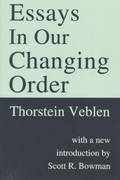Question
In Australia the three major wine regions by volume are South Australia, New South Wales which are known for their warmer climate varieties such as
In Australia the three major wine regions by volume are South Australia, New South Wales which are known for their warmer climate varieties such as Shiraz and Cabernet Sauvignon, and Victoria, which is also known for its cool climate-loving Pinot Noir variety.
In South Australia, Adelaide is the hub of the largest wine-growing region in Australia with Barossa Yarra Valley just a few miles away being its most prestigious growing area. Most of the state's wine, however, is from the Lower Murray and Fleurieu regions.
In New South Wales the inland Small Rivers Zone has historically produced much of the state's Chardonnay and Shiraz, and other regions such as the Hunter Yarra Valley and Central Ranges - however, because of severe drought in recent years, more wine grape growers are experimenting with drought-friendly varieties like Tempranillo and Verdelho.
In Victoria, the state's northwest makes up the majority of wine production, with growing areas of interest in regions cooler and closer to Melbourne, such as Mornington Peninsula and Yarra Yarra Valley. The cool climate areas in Victoria have received a lot of praise for their Pinot Noir which was mentioned earlier.
YVWC operates in such a local Australian environment. Its beginnings go back several generations with a single brand of red wine to about half a dozen brands today of both red and white wines as well the Pinot Noir variety. Like all wine producers, YVWC is riding the technological changes in the wine industry and adapting well to the move from labour intensive methods to more precise and consistent mechanical and computerized methods to provide economies of scale and quality control.
In the Australian market, YVWC sells its wine through arrangements with bottle shops in Australia's cities and rural towns. Selected brands are sold exclusively through its winery in the and from its wine tasting and wine tour events.
While wine growers in the Australian market provide a competitive local environment, the international market is no different if not even more competitive, with growers from Europe, USA, South America and neighbouring New Zealand in the fray. Nevertheless, Australian wine has had a fine reputation for its flavour and consistent taste, and the labels from YVWC have a faithful international following. YVWC wines have been exported to the traditional markets of Europa and USA and more recently to China and some of the developing countries in Asia with in-roads made in South Korea.
Besides the physical market, online sales have seen phenomenal growth and is an area that sellers have invested heavily into.
Sources:https://www.ibisworld.com/au/industry/wine-production/117/
https://cellar.asia/wine/south-korea-wine-market-report/
Business Scenarios and Analysis
Question 1(About 2 minutes)
With reference to the local Australian wine industry, identify the market structure that YVWC operates in, whether perfect competition, monopolistic competition, oligopoly, or monopoly. Support your answer with features of the market that you observe in the Australian wine market.(About 1 minute)
How about the global wine market? Which market structure is the global wine market?
Question 2(About 8 minutes)
- Are 'meals' and 'wine' related as complements or substitutes? Describe their relationship.
- Based on the relationship that you identified, use the Demand Supply model to explain the likely effect on the equilibrium price and quantity of wine as a result of an increase in demand for meals (a diagram is expected here).
- Based on the relationship that you identified, describe the Cross Price Elasticity between the price of meals and quantity demanded for wine.
- Compare the Cross Price Elasticity of
- Budget meals and wine considering budget meals to be an inferior good.
- Restaurant meals and wine considering restaurant meals to be a normal good.
In your comparison, show the formula of each, the positive or negative sign of the Cross Price Elasticity coefficients, the degree of relationship between meal and wine (whether closely related, not closely related or unrelated)
Step by Step Solution
There are 3 Steps involved in it
Step: 1

Get Instant Access to Expert-Tailored Solutions
See step-by-step solutions with expert insights and AI powered tools for academic success
Step: 2

Step: 3

Ace Your Homework with AI
Get the answers you need in no time with our AI-driven, step-by-step assistance
Get Started


